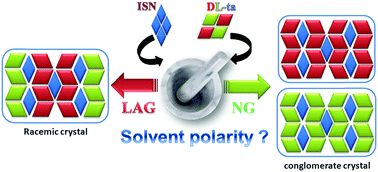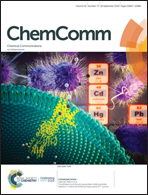Effect of solvent polarity in mechanochemistry: preparation of a conglomerate vs. racemate†
Abstract
Cocrystallization of racemic DL-tartaric acid (DL-ta) and achiral isoniazid (ISN) was investigated using mechanochemistry. Neat grinding (NG) and liquid-assisted grinding (LAG) in the presence of non-polar liquids result in the formation of a conglomerate (ISN·D-ta/ISN·L-ta); whereas LAG with polar liquids yields racemic salt ISN·DL-ta. The effect of solvent polarity and dipole moment in mechanochemistry is discussed.



 Please wait while we load your content...
Please wait while we load your content...